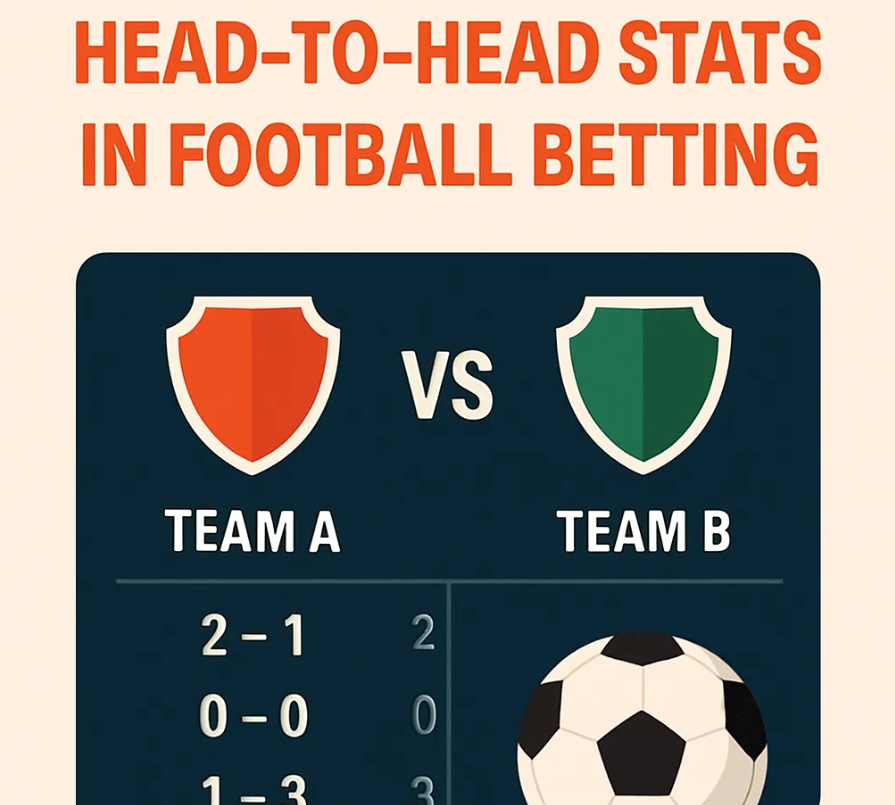Key statistics to look at in football betting
Achieving consistent profit on NFL and NCAA gridiron wagers requires more than gut feelings or team loyalty. Professional bettors know that statistics in football betting serve as the foundation for making profitable decisions consistently. Understanding which numbers matter most and how to interpret them separates winning bettors from those who rely purely on luck. This guide reveals the key metrics for making informed wagers.
Why statistics are critical in football betting in the US ⚡

The American sports wagering landscape has transformed dramatically since legalization spread across multiple states. With billions of dollars staked annually on NFL and NCAA gridiron action, the competition among players has intensified. Casual approaches no longer cut it when you’re competing against sophisticated algorithms and experienced handicappers who rely heavily on data analysis.
Data-driven analysis provides objective evidence that cuts through bias and emotion. When your favorite team plays, personal attachment clouds judgment. Numbers don’t lie about defensive efficiency, offensive productivity, or situational performance. The sportsbooks employ teams of analysts crunching data to set their lines—you need similar tools to find value and identify mispriced odds.
Recent studies show that bettors who incorporate systematic statistical analysis achieve win rates 8-12% higher than those making decisions based on intuition alone. That difference compounds significantly over a full NFL or NCAA campaign. Understanding football betting statistics transforms gambling from random chance into a skill-based investment where knowledge provides a measurable edge.
How proper statistical analysis helps you make informed decisions 🏈
Statistical analysis removes emotional decision-making. Instead of making decisions based on flashy highlights or media narratives, you evaluate concrete performance indicators. Expected goals (xG) reveal whether scoring output is sustainable. Possession rate shows which teams control game flow.
Defensive metrics paint an accurate picture of performance against different schemes. Yards allowed per play, third-down rates, and red zone efficiency indicate defensive strength more reliably than total points allowed. Conversion rate—the percentage of scoring opportunities resulting in touchdowns—separates efficient offenses from those that stall.
Top football statistics every bettor should track 📈
Serious bettors maintain spreadsheets tracking dozens of metrics throughout the season. While this might seem overwhelming initially, focusing on key categories provides most of the value without requiring excessive time investment. The metrics that matter most depend on wager type—totals require different analysis than spreads—but certain core fundamentals apply universally.
Using statistics in football betting starts with identifying which numbers correlate most strongly with winning outcomes. Offensive and defensive yards per play rank among the most predictive metrics. This efficiency measure accounts for both explosive plays and consistent advancement, providing a clearer picture than total yardage which can be inflated by garbage time or skewed by pace of play.
Turnover differential significantly impacts game results, though bettors must distinguish between skill-based turnovers and luck. Fumble recoveries contain substantial randomness, while interception rates often reflect quarterback decision-making and defensive scheme effectiveness. Key NFL betting metrics include third-down and fourth-down conversion percentages, determining whether teams sustain drives.
Team performance metrics 🏟️
Analyzing team performance requires examining both offensive and defensive capabilities. Mastering statistics in football betting means evaluating advanced metrics like DVOA, which accounts for opponent strength and game situation to assess true team quality.
Special teams performance often receives insufficient attention despite impacting field position. Average starting field position, touchback percentage, and punt net yardage all influence win probability. Home and away splits matter enormously in NCAA competition where travel distances vary dramatically. Team performance betting data should always separate home and away statistics.
Key stats comparison between two teams 📋
Run-stopping performance deserves special emphasis because teams that control the ground game force opponents into predictable situations. Yards per carry allowed and explosive run rate indicate whether a defense controls the line of scrimmage. Player performance metrics football become crucial when key contributors miss games due to injury.
Best sources for NFL and college football stats 🖥️
Data quality determines analysis quality. PFR remains the gold standard for historical NFL data and comprehensive metrics. Pro Football Reference data includes advanced metrics beyond basic box scores, such as expected points added.
For college football, Sports Reference offers comprehensive coverage across all programs. College football betting statistics from reliable sources help navigate hundreds of teams across multiple conferences. Advanced football analytics platforms like Football Outsiders provide proprietary metrics unavailable through free sources.
The difference between good bettors and great bettors often comes down to data quality and interpretation. Data helps you identify mismatches consistently rather than relying on hunches.
Trusted sports stats websites include ESPN Stats & Info, TeamRankings, and The Athletic’s analytics sections. BetWhale provides sportsbook data reference tools directly within their platform, allowing users to access relevant statistics without leaving the betting interface.
Understanding key matchup statistics 🔍
General team numbers provide context, but matchup-specific analysis determines whether they apply to your targeted game. A high-powered passing offense might struggle against a secondary that excels in coverage, even if their season-long numbers look impressive. Using statistics in football betting requires evaluating how specific team strengths and weaknesses interact.
Offensive and defensive scheme compatibility matters enormously. Zone-heavy defenses struggle against accurate quarterbacks who read coverages well, while man coverage defenses get exposed by elite route runners. Identifying these stylistic mismatches creates profitable edges when oddsmakers undervalue scheme-specific advantages.
Weather impact on football betting represents another critical matchup consideration that transcends season-long statistics. Wind speeds above 15 mph significantly reduce passing efficiency and total scoring. Cold temperatures affect ball handling and kicking accuracy. Teams from warm-weather climates or indoor stadiums often underperform when traveling to harsh environments late in the season.
Stadium conditions betting outcomes include factors like field surface (grass versus artificial turf), altitude, and crowd noise levels. Denver’s elevation affects visiting teams’ conditioning, while dome stadiums eliminate weather variables entirely. These venue-specific factors create situational edges for bettors who track them systematically.
Head-to-head performance 🆚
Recent head-to-head results offer valuable insights, though bettors must avoid overweighting small sample sizes. Matchup statistics NFL include how specific quarterbacks perform against particular defenses throughout their careers. Some defensive coordinators consistently scheme effectively against certain quarterback types.
Head-to-head football stats should examine not just win-loss records but also how teams performed relative to expectations. ATS records in head-to-head meetings often reveal greater profit potential than straight-up results.
How matchup stats predicted upsets 📚
Coaching matchups deserve consideration beyond player metrics. Some coaches consistently outperform expectations against specific opponents. Rivalry games often defy statistical expectations as motivation overrides talent differences. Betting statistics football reveal these situational edges when you segment data by game type.
Incorporating statistics into your betting strategy 💡
Gathering data represents only the first step—successful players develop systematic frameworks for translating metrics into profitable decisions. Without structured methodology, even quality data produces inconsistent results because interpretation remains subjective and prone to cognitive biases.
Creating a weighted statistical model helps prioritize metrics based on their predictive value. Not all metrics carry equal weight—some correlate more strongly with winning and covering spreads than others. Yards per play typically predicts outcomes more accurately than total yards, while turnover margin contains significant randomness that mean-reverts over time.
Using statistics in football betting effectively requires distinguishing between descriptive and predictive metrics. A team might have excellent offensive numbers because they’ve played weak defenses, making those figures misleading for future performance. Strength-of-schedule adjustments separate teams that dominated weak competition from those proving themselves against quality opponents.
Adjusting stake size based on statistical confidence 💵
Confident players adjust wager sizes based on perceived edge strength rather than placing identical amounts on every game. When comprehensive football betting statistics reveal significant advantages—for instance, a strong rushing offense facing the league’s worst run defense in favorable weather conditions—increasing stake size by 50-100% makes mathematical sense.
Conversely, games with closely matched statistical profiles warrant smaller wagers or avoiding entirely. If college football stats analysis shows two evenly matched teams with similar efficiency metrics and comparable strength of schedule, the betting line likely reflects true probabilities accurately, leaving minimal edge to exploit.
Kelly Criterion provides a mathematical framework for optimal bet sizing based on estimated win probability and payout odds. While full Kelly wagering produces volatility that many players find uncomfortable, fractional Kelly approaches (staking 25-50% of the recommended amount) offer reasonable compromises between growth and risk management.
Combining multiple data points for smarter bets 📊
Sharp handicappers rarely make decisions based on single metrics. Instead, they synthesize multiple data points to form comprehensive assessments of game outcomes. A team with excellent offensive output but poor special teams and injury concerns presents a more complex picture than raw numbers suggest.
Creating checklists ensures systematic evaluation—this disciplined approach to statistics in football betting covers all relevant factors before placing bets.
- ✅ Offensive and defensive efficiency rankings
- ✅ Recent form over the last 4-6 games
- ✅ Head-to-head matchup history
- ✅ Key injuries and their positional importance
- ✅ Weather forecast and venue conditions
- ✅ Motivation factors (playoff implications, rivalry games)
- ✅ Travel and rest situations (short weeks, cross-country trips)
- ✅ Coaching matchups and historical performance
Line shopping across multiple sportsbooks becomes essential once you’ve identified valuable opportunities. A half-point difference on a spread or 10 cents on a money line significantly impacts long-term profitability. BetWhale offers competitive odds, but comparing options ensures maximum value on every wager.
Using USD and crypto for flexible betting options 💳
Modern sportsbooks like BetWhale offer diverse payment methods accommodating different bettor preferences. Traditional USD deposits via credit cards, debit cards, and bank transfers provide familiar options for most users. Minimum deposits typically start around $10-$20, making the platform accessible regardless of bankroll size.
Cryptocurrency options including Bitcoin, Ethereum, and stablecoins offer advantages for some bettors. Faster transaction processing means quicker access to funds when you identify time-sensitive value plays. Lower fees compared to traditional banking methods preserve more of your bankroll for wagering rather than administrative costs.
Regardless of deposit method, responsible bankroll management remains paramount. Set clear limits on maximum wager sizes and total exposure to avoid emotional chasing of losses. Even the most comprehensive football betting statistics improve your decision quality but never guarantee outcomes—variance remains inherent in wagering even with superior analysis.
Common missteps and how to avoid them 📋
Real-life examples of statistics-based betting success 🏆
Professional sports bettors consistently demonstrate how systematic statistical analysis produces long-term profitability. While no one wins every bet, maintaining win rates above 55% against the spread generates substantial returns when compounded over hundreds of wagers per season.
The 2022 NFL season provided numerous examples where metrics-based evaluation identified value before mainstream players caught on. The Jacksonville Jaguars started 2-6 but showed underlying metrics suggesting future improvement. Their yards per play differential indicated they were performing better than their record suggested, with close losses in high-variance games. Bettors who recognized this statistical signal profited significantly as Jacksonville won seven of their final nine games.
College football betting statistics revealed Tennessee’s transformation in 2022 before the national media narrative caught up. Early-season efficiency metrics showed dramatic improvement in both offensive explosiveness and defensive consistency compared to previous years. Bettors who trusted these statistical indicators rather than Tennessee’s historical reputation found substantial value on Volunteers spreads and totals throughout their breakout season.
Famous wins predicted through data 🎯
The 2019 AFC Championship game between Kansas City and Tennessee exemplified how matchup metrics uncovered value plays. Tennessee’s strong rushing attack—averaging 5.1 yards per carry during their playoff run—faced a Kansas City defense ranking 29th against the run. The Titans’ defense excelled at limiting explosive plays, which historically troubled Kansas City’s big-play offense.
Statistical analysis suggested Tennessee’s style created problems for Kansas City’s tendencies. While most bettors favored Kansas City based on star power, data-driven bettors identified value on Tennessee’s spread. The betting statistics football analysts had compiled throughout the season painted a clear picture that mainstream bettors missed. The Titans won outright in a result that data-driven matchup analysis had flagged as higher probability than market pricing reflected.
The 2007 Super Bowl between the Giants and undefeated Patriots demonstrated how specific matchup dynamics sometimes override overall team quality. New York’s defensive line ranked elite in pressure rate, while the Patriots’ offensive line had struggled against aggressive pass rushes. Despite New England’s perfect regular season, positional matchups indicated a competitive contest rather than the blowout many expected.
Long-term profitability isn’t about picking winners—it’s about identifying when market lines don’t accurately reflect true probabilities. Analytics help you spot those mismatches consistently rather than relying on hunches.
Make data your advantage ⚡
Transforming from casual bettor to consistently profitable requires embracing statistics in football betting as your primary framework. While watching games matters, numbers provide objective evidence that feelings cannot match. Successful bettors spend more time analyzing spreadsheets than watching highlights.
Start simple by tracking 5-10 core metrics rather than attempting to analyze everything immediately. Master yards per play, third-down rates, red zone efficiency, and turnover differential before expanding into complex analytics.
The wagering landscape grows more efficient as information spreads. Edges that existed five years ago have largely disappeared as sportsbooks improved modeling. Maintaining profitability requires continuous learning and adaptation.
BetWhale empowers bettors with tools needed to implement data-driven strategies effectively. Competitive odds, diverse markets, and reliable payouts create an environment where statistical edges translate directly into bankroll growth.
FAQ
What are the most important stats to consider in NFL betting?
Yards per play, third-down conversions, red zone efficiency, and DVOA.
How do weather conditions affect football game outcomes?
Wind 15+ mph reduces passing, cold temps hurt warm-climate teams.
Which websites provide reliable college football stats?
Sports Reference, ESPN, and TeamRankings for betting analytics.
Can advanced metrics like DVOA improve my betting results?
Yes, DVOA predicts outcomes better by adjusting for opponent quality.
How should I adjust my stakes based on statistical insights?
Bet 50-100% more on strong edges, max 2-3% of bankroll per bet.









